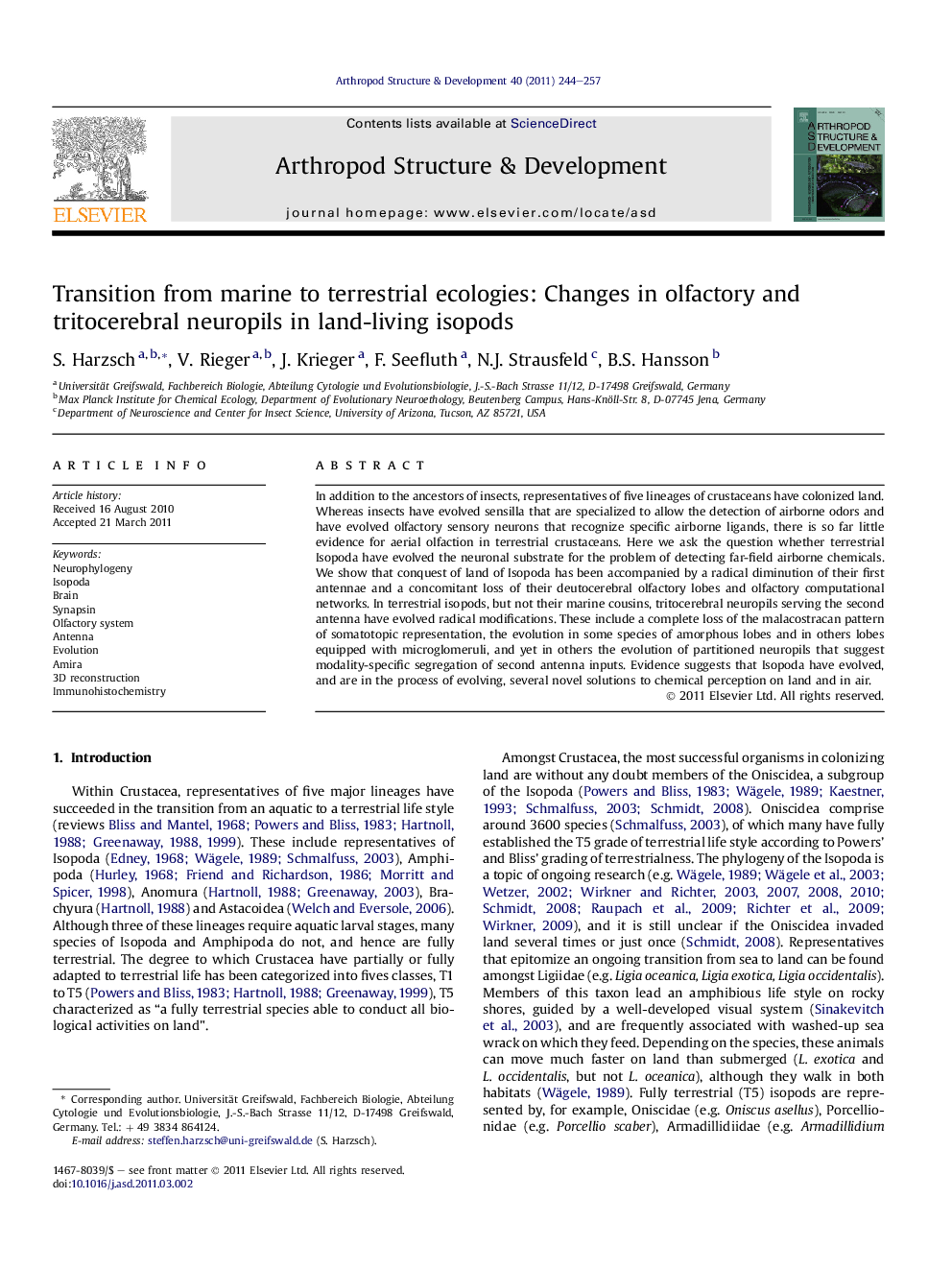| کد مقاله | کد نشریه | سال انتشار | مقاله انگلیسی | نسخه تمام متن |
|---|---|---|---|---|
| 2778783 | 1153166 | 2011 | 14 صفحه PDF | دانلود رایگان |

In addition to the ancestors of insects, representatives of five lineages of crustaceans have colonized land. Whereas insects have evolved sensilla that are specialized to allow the detection of airborne odors and have evolved olfactory sensory neurons that recognize specific airborne ligands, there is so far little evidence for aerial olfaction in terrestrial crustaceans. Here we ask the question whether terrestrial Isopoda have evolved the neuronal substrate for the problem of detecting far-field airborne chemicals. We show that conquest of land of Isopoda has been accompanied by a radical diminution of their first antennae and a concomitant loss of their deutocerebral olfactory lobes and olfactory computational networks. In terrestrial isopods, but not their marine cousins, tritocerebral neuropils serving the second antenna have evolved radical modifications. These include a complete loss of the malacostracan pattern of somatotopic representation, the evolution in some species of amorphous lobes and in others lobes equipped with microglomeruli, and yet in others the evolution of partitioned neuropils that suggest modality-specific segregation of second antenna inputs. Evidence suggests that Isopoda have evolved, and are in the process of evolving, several novel solutions to chemical perception on land and in air.
► Marine isopods have olfactory lobes with spherical glomeruli.
► This pattern is typical for malacostracan crustaceans.
► Terrestrial isopods do not have recognizable olfactory lobes.
► Evidence that terrestrial isopods have generally re-evolved aerial olfaction is ambiguous, although certain genera are able to detect chemical cues using the second antenna pair.”
Journal: Arthropod Structure & Development - Volume 40, Issue 3, May 2011, Pages 244–257